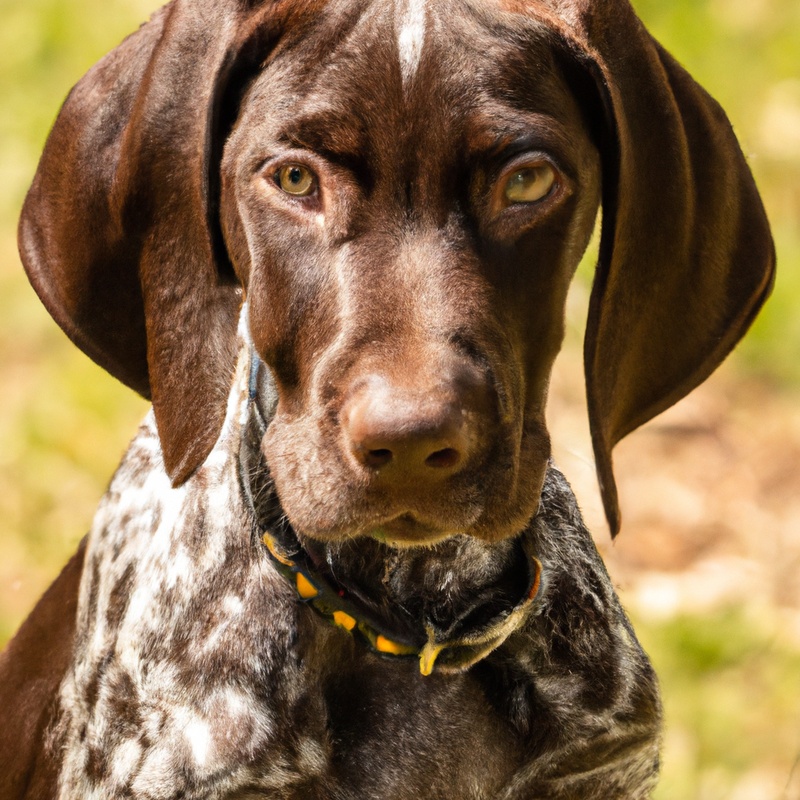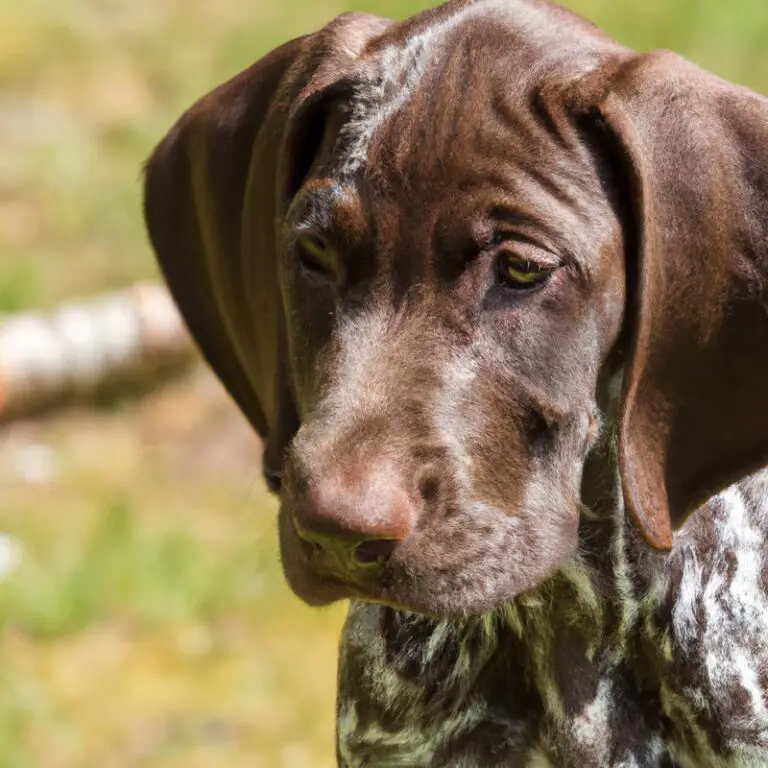How Do I Prevent My German Shorthaired Pointer From Chasing Cars While On a Walk?
Key Takeaways:
- Consistent training is key in teaching your German Shorthaired Pointer to avoid chasing cars during walks.
- Utilize positive reinforcement techniques to reward your dog for good behavior and redirect their attention away from cars.
- Keep your dog on a leash to maintain control and prevent them from running after passing vehicles.
- Consider using a deterrent such as a spray collar or noise device to discourage car chasing behavior.
Are you tired of being pulled down the street by your German Shorthaired Pointer as it lunges after passing cars? It can be frustrating and even dangerous to have a dog that can’t resist the urge to chase vehicles.
But don’t worry, you’re not alone.
Many dog owners struggle with this behavior. Fortunately, there are effective techniques to curb your dog’s car-chasing instincts.
In this article, I’ll guide you through understanding why your German Shorthaired Pointer feels compelled to chase cars and provide you with practical training techniques, environmental management strategies, and even tips for seeking professional help.
Let’s keep your walks enjoyable and your pup safe!
| Prevention Tips | |
|---|---|
| 1. | Always keep your German Shorthaired Pointer on a leash during walks. |
| 2. | Use a no-pull harness or head collar to have more control over your dog. |
| 3. | Train your dog to have a reliable recall command. |
| 4. | Avoid walking your dog close to busy roads or areas with heavy traffic. |
| 5. | Redirect your dog’s attention with treats or toys whenever a car approaches. |
| 6. | Keep your dog mentally stimulated through regular exercise and training. |
| 7. | Consider seeking professional help from a dog trainer or behaviorist. |
Understanding the Behavior
The instinct to chase
Dogs, including German Shorthaired Pointers, have a natural instinct to chase things that move, such as cars. It’s an instinctive behavior that is deeply ingrained in them.
When they see a car moving by, their prey drive kicks in, and they feel compelled to chase it.
It’s important to understand that this behavior is not something they do out of spite or disobedience. It’s simply their natural instinct at play.
To effectively prevent your German Shorthaired Pointer from chasing cars while on a walk, it’s crucial to address and manage their instinct to chase.
Impact of chasing cars
Chasing cars may seem like a fun and harmless behavior for dogs, but it can have serious consequences. First and foremost, it poses a significant risk to the dog’s safety.
Dogs that chase cars are in danger of being hit by oncoming vehicles, which can lead to severe injuries or even death.
Not to mention, it can also be a danger to the occupants of the car and other pedestrians. Additionally, chasing cars can lead to legal troubles for dog owners.
If a dog causes an accident or scares a driver, the owner may be held responsible for any damages caused.
This can result in expensive fines, legal fees, and potential lawsuits. Moreover, the habit of chasing cars can be difficult to break.
It reinforces a dog’s instinct to chase moving objects, making it more likely for them to engage in similar behaviors with other moving objects, such as bicycles or joggers.
This can be problematic and potentially dangerous in public spaces.

Training Techniques
Basic obedience training
Basic obedience training is essential for all dogs, including German Shorthaired Pointers. It lays the foundation for good behavior and helps prevent them from chasing cars while on a walk.
Here are some key aspects of basic obedience training that can help prevent car chasing:
- Recall: Teach your dog a reliable recall command, such as “come” or “here.” Practice this command in a controlled environment first, then gradually introduce distractions like toys or treats. Reinforce and reward your dog when they respond to the command promptly.
- Loose leash walking: Train your dog to walk calmly beside you on a loose leash. Use positive reinforcement techniques, such as treats or praise, to reward your dog when they walk beside you without pulling or lunging. Consistency and patience are key.
- “Leave it” command: Teach your dog the “leave it” command to discourage them from chasing cars or any other dangerous objects. Start by offering a treat in your closed hand and say “leave it.” When your dog stops trying to get the treat, reward them with a different treat. Gradually increase the difficulty level by using more tempting items.
- Positive reinforcement: Positively reinforce good behavior with treats, praise, and play. This encourages your German Shorthaired Pointer to repeat the desired behavior and reinforces a strong bond between you and your dog.

Positive reinforcement
Positive reinforcement is an incredibly effective technique when it comes to training dogs, including German Shorthaired Pointers. It involves rewarding your dog for good behavior, which can help prevent them from chasing cars while on a walk.
First and foremost, consistency is key.
Make sure to reward your German Shorthaired Pointer immediately after they exhibit the desired behavior, such as ignoring passing cars. This will help them associate the reward with the behavior, reinforcing it positively.
When using positive reinforcement, it’s important to use rewards that your dog finds highly motivating.
This could be their favorite treats, a special toy, or even verbal praise and affection. Remember to be patient and stay positive.
Avoid punishments or scolding, as these can be counterproductive and may lead to fear or anxiety.
By focusing on rewarding and encouraging good behavior, you can gradually train your German Shorthaired Pointer to refrain from chasing cars while on a walk.
Distraction methods
Distraction methods can be very effective in preventing your German Shorthaired Pointer from chasing cars while on a walk. One simple method is to always carry treats or toys with you.
Whenever you see a car approaching, redirect your dog’s attention by showing them the treat or toy and getting them to focus on it instead.
You can also try using a clicker to associate the sound with a reward, so when you click, your dog knows they’re doing something right and gets distracted from chasing cars. Another option is to use a water spray bottle to gently spray your dog when they show signs of wanting to chase a car.
This can startle them and divert their attention away.
Environmental Management
Using a leash and harness
Using a leash and harness is a key part of preventing your German Shorthaired Pointer from chasing cars while on a walk. First and foremost, make sure you have a sturdy leash that is long enough to give your dog some freedom but short enough to maintain control.
A harness is also important as it will distribute the pulling force across your dog’s chest rather than their neck, preventing injury.
Always keep your dog on a leash, even if they are well-trained, as it is the best way to ensure their safety and the safety of others.

Walking routes and timing
When it comes to preventing your German Shorthaired Pointer from chasing cars while on a walk, choosing the right walking routes and timing is key. First and foremost, opt for routes that have less traffic and are away from busy roads.
This reduces the chances of your dog getting distracted or tempted by passing cars.
Look for quieter residential areas, parks, or trails where you can enjoy peaceful walks together. In terms of timing, try to walk your dog during less busy times of the day.
Early mornings or late evenings are usually quieter and have less traffic on the roads.
This minimizes the chances of encountering cars and reduces the likelihood of your dog getting into a chase.
Avoiding triggers
To prevent your German Shorthaired Pointer from chasing cars while on a walk, it’s important to avoid triggering their instinct to chase. Here are a few tips to help you avoid these triggers:
- Choose safer walking routes: Opt for routes with less car traffic, such as residential streets or quiet parks. This can minimize the chances of your dog encountering moving vehicles.
- Use a leash and harness: Always keep your dog on a leash and use a secure harness. This will give you better control and prevent your dog from bolting after passing cars.
- Positive reinforcement training: Teach your dog basic commands, such as “stay” or “leave it,” and reinforce positive behavior with treats and praise. This will help redirect their attention away from cars and towards you.
- Divert attention: Carry some treats or toys during your walk. If you spot a car approaching, redirect your dog’s attention by giving them a treat or engaging them in play.
- Desensitization training: Gradually expose your dog to cars from a safe distance, using positive reinforcement techniques. This can help them become more comfortable and less reactive around moving vehicles.
Seeking Professional Help
Consulting a dog trainer or behaviorist
If you’re struggling with your German Shorthaired Pointer’s car-chasing behavior, consulting a dog trainer or behaviorist can be incredibly helpful. These professionals have expertise in understanding and modifying dog behavior, and they can provide you with tailored advice and strategies to address the issue.
They will assess your dog’s specific needs and help you develop a training plan to prevent car chasing during walks.
The role of medications and supplements
Medications and supplements can play a helpful role in preventing your German Shorthaired Pointer from chasing cars while on a walk. They are not a magic solution, but they can be part of a comprehensive approach to keep your dog safe.
A common option is anxiety medication, which can help to calm your dog’s nervousness and reduce their desire to chase cars.
Supplements like calming treats or natural remedies may also provide some relief. However, it’s important to consult with a veterinarian before starting any medication or supplement, as they can guide you towards the best option for your dog’s specific needs.
Additional Tips
Socialization and exposure to vehicles
Socialization and exposure to vehicles are key aspects of preventing your German Shorthaired Pointer from chasing cars while on a walk. By introducing your dog to different vehicles from a young age, they will become familiar with these moving objects and be less likely to chase them.
Take your dog for walks in areas with light traffic, gradually moving to busier streets as they become more comfortable.
Encourage positive interactions with vehicles by rewarding your dog for calm behavior around them. Regular exposure and positive reinforcement will help your dog develop a positive association with vehicles and reduce their desire to chase.
Exercise and mental stimulation
Exercise and mental stimulation are key factors in preventing your German Shorthaired Pointer from chasing cars while on a walk. Providing enough physical activity and mental engagement can help redirect your dog’s focus and tire them out, reducing their desire to chase cars.
Make sure to incorporate daily exercise sessions into your routine.
This can include brisk walks, jogging, or playing fetch in a secure area. Aim for at least 30 minutes to an hour of activity each day, depending on your dog’s energy level and age.
Engaging your dog’s mind is just as important as physical exercise.
Interactive toys, puzzle feeders, and training sessions can help keep their brain occupied. Incorporate mental stimulation activities like obedience training, scent work, or agility exercises to challenge and engage your dog’s mind.
Patience and consistency
Patience and consistency are key when it comes to preventing your German Shorthaired Pointer from chasing cars while on a walk. It’s important to remember that this behavior won’t change overnight, so you need to be patient with your dog.
Stay consistent in your training and reinforce positive behaviors.
When walking your dog, avoid routes with heavy traffic or areas where cars are moving quickly. Start with basic obedience training and practice recall commands in a safe and controlled environment.
Gradually introduce distractions like parked cars or slow-moving vehicles, and reward your dog for focusing on you instead of the cars.
Consistency is crucial. Stick to a routine and make sure everyone in the household follows the same rules.
Avoid allowing your dog off-leash until they have mastered the skills needed to resist chasing cars.
With time and consistent training, your German Shorthaired Pointer can learn to walk calmly by your side and ignore passing vehicles.
Final Verdict
Preventing a German Shorthaired Pointer from chasing cars requires a combination of understanding their behavior, implementing effective training techniques, managing the environment, and seeking professional help if needed. By understanding their instinct to chase and the potential dangers of this behavior, we can take proactive steps to ensure their safety.
Training techniques such as basic obedience and positive reinforcement can be used to redirect their attention and teach them appropriate behavior.
Environmental management, such as using a leash and harness, choosing walking routes carefully, and avoiding triggers, can also help prevent car chasing incidents. Lastly, seeking the assistance of a professional dog trainer or behaviorist can provide additional guidance and support.
Supplementary measures such as socialization, exercise, and mental stimulation can further contribute to their overall well-being.
It’s essential to approach the training process with patience and consistency, understanding that it may take time to overcome this behavior. By implementing these strategies, you can create a safe and enjoyable walking experience for both you and your German Shorthaired Pointer.
Remember, it’s crucial to consult trusted professionals and rely on evidence-based approaches for the best results.







